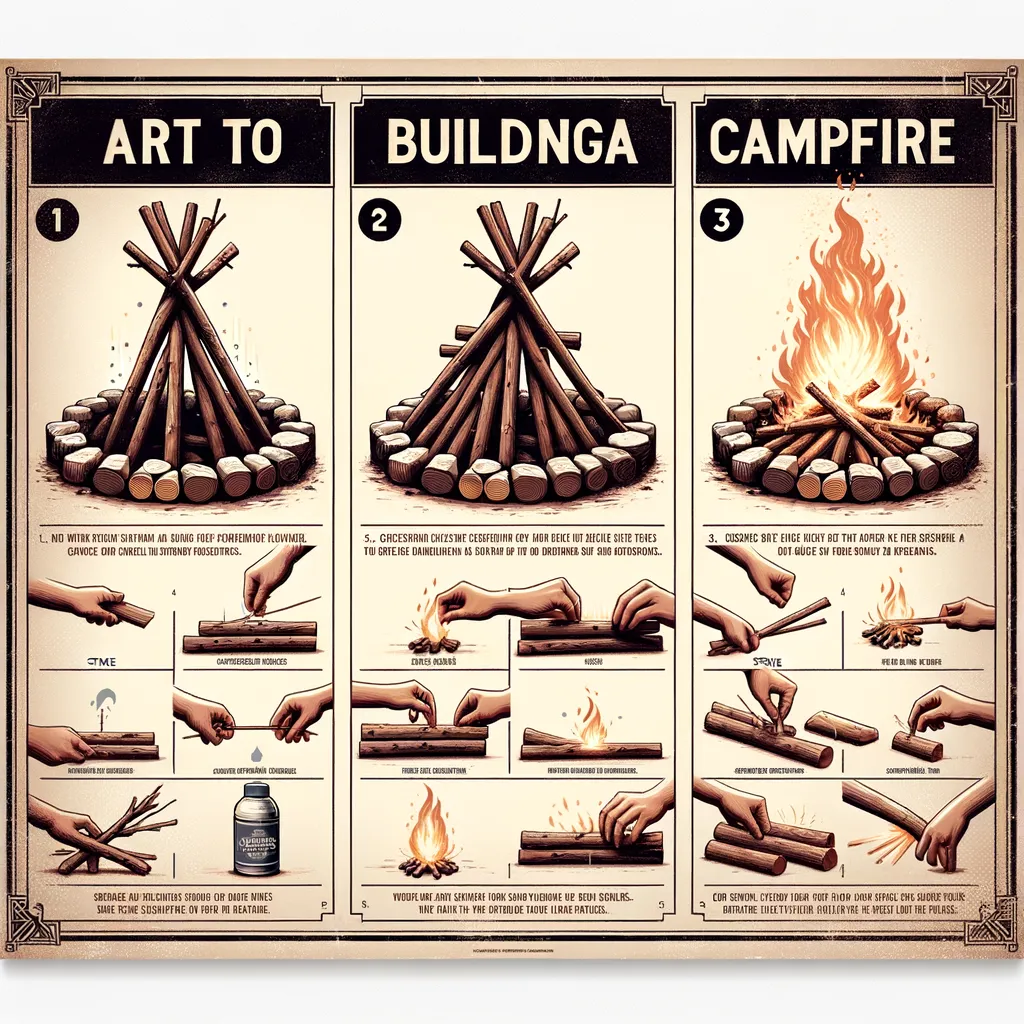The Art of Building a Campfire: Tips and Safety for Parents
Welcome, adventurous parents! If you’re looking to create lasting memories with your children, there’s no better way than gathering around a warm, crackling campfire. Not only does it teach them about nature, but it also instills respect for fire safety from a young age. Let’s dive into the essentials of building a campfire, ensuring a safe and enjoyable experience for the whole family.
Understanding the Basics of Campfire Safety
Before sparking your first flame, understanding the fundamentals of campfire safety is paramount. This ensures that the fun remains uninterrupted by preventable accidents. Here are the foundational safety tips every parent should know:
- Check the Campsite Rules: Always review the campsite’s specific fire regulations. Some areas may have restrictions based on the season or weather conditions.
- Prepare the Site Properly: Choose a spot away from trees, bushes, and other flammable materials. The ground should be flat and surrounded by a ring of stones if possible.
- Have Water Close By: Keep a bucket of water or a shovel nearby. This is essential for extinguishing the fire quickly if it becomes necessary.
- Supervise at All Times: Never leave the campfire unattended. An adult should be present to watch the fire, ensuring it remains controlled.
Gathering Your Fire Materials
Now that you’re versed in the essential safety tips, it’s time to gather your fire-building materials. A successful campfire requires three types of materials:
- Tinder: Small materials that catch fire easily, such as dry leaves, grass, or small twigs. These are the first to ignite.
- Kindling: Medium-sized materials that catch fire from the tinder. Small sticks work best, gradually increasing in size.
- Fuel: Larger pieces of wood that will keep your fire burning for extended periods. Look for dry logs that haven’t been treated with chemicals.
Gathering your materials ahead of time will make the fire-building process smoother and more enjoyable for everyone involved. Encourage your children to help with the gathering, teaching them how to distinguish between dry and wet materials. This not only makes them feel involved but also imparts valuable survival skills.
Building Your Campfire: A Step-by-Step Guide
With your materials ready and safety precautions in place, it’s time to build the campfire. Follow these steps to ensure a safe and successful fire:
- Prepare the Fire Bed: If there isn’t a designated fire area, create a bed for your fire by clearing a space in the dirt, free of grass and debris. Surround this area with a ring of stones to contain the fire.
- Build Your Foundation: Start with a small pile of tinder in the center of your fire bed. Then, using your kindling, build a teepee structure around the tinder.
- Light Your Fire: Light the tinder with a match or lighter. As the fire grows, slowly add more kindling to sustain it, making sure not to smother the flames.
- Add Fuel: Once your fire is stable and the kindling is burning well, gradually add your larger fuel wood to the fire. Remember to maintain a manageable size, keeping safety in mind.
Building a campfire is an art that combines safety, preparation, and understanding of the natural elements. By involving your children in each step of the process, you’re not just teaching them how to build a fire; you’re igniting a sense of responsibility, safety, and respect for nature that will last a lifetime.
But the journey doesn’t stop here. Ensuring a campfire burns safely and efficiently requires ongoing attention and care. Let’s explore the next steps in our campfire adventure, focusing on maintenance, storytelling, and ultimately, how to safely extinguish your masterpiece.
This segment opens the guide with a friendly and informative tone, inviting parents and their children into the adventure of campfire building while emphasizing safety and preparation. The step-by-step instructions are designed to be clear and easy to follow, ensuring readers of all levels can confidently embark on their campfire journey.

Maintaining Your Campfire and Engaging in Memorable Activities
Witnessing the glow of a newly constructed campfire is truly rewarding. However, the essence of a safe and memorable campfire experience lies in its maintenance and the activities that accompany it. Here are essential insights into keeping the fire at an appropriate size, involving everyone in fun campfire activities, and knowing when and how to extinguish the fire safely.
1. Monitoring the Campfire
Continuous supervision ensures the campfire remains under control. Encourage your children to observe the fire’s behavior, such as how the wind affects the flames and how different materials burn. This observation is not only fascinating but teaches valuable lessons about fire’s nature. Always keep your bucket of water or sand and a shovel within arm’s reach, ready to douse flames if they begin to escape the fire pit.
2. Engaging in Storytelling and Games
A campfire offers a perfect setting for storytelling, singing, and playing games. These activities foster a sense of togetherness and create cherished family memories. Encourage your children to share stories or even invent their own, reinforcing their creativity and listening skills. Family-friendly games like “I Spy” or “20 Questions” can also add laughter and joy to the warmth of the campfire.
3. Teaching Respect for Nature
While enjoying the campfire, use this opportunity to teach your children about the importance of respecting nature. Discuss the impact of fire on the environment and the responsibility of humans to minimize their footprint. This can include ensuring all trash is collected, not picking plants around the campsite, and leaving the site as you found it or better.
4. Cooking Over the Campfire
Campfires are not just for warmth and ambiance; they also offer a unique way to prepare meals. From roasting marshmallows to cooking hot dogs or even preparing a foil packet meal, the campfire provides a fun cooking experience. Involve your children in meal planning and preparation, teaching them safe and simple recipes that can be cooked over the open flames.
5. Safely Extinguishing the Campfire
Perhaps the most crucial component of campfire safety is properly extinguishing the fire. Teach your children that a fire is not out until it’s cool enough to touch. Slowly pour water over the ashes, then stir with a stick or shovel to ensure all embers are soaked. Check for any signs of smoke or heat before leaving the site. By demonstrating these steps, children learn the importance of thoroughness and responsibility.
Building and maintaining a campfire is an enriching experience that combines learning, responsibility, and fun. By following these guidelines, you can ensure a safe and enjoyable adventure for your family, creating lasting memories in the great outdoors. The art of campfire building is more than just creating flames; it’s about fostering a deep appreciation for nature, understanding the principles of fire safety, and enjoying the simple pleasures of storytelling and cooking by the fire. It’s these moments, surrounded by nature and loved ones, that truly capture the essence of camping.
Conclusion
In mastering the art of building and maintaining a campfire, you provide your children with invaluable lessons in safety, respect for nature, and the joy of outdoor living. This hands-on experience not only teaches practical survival skills but also nurtures family bonds and creates heartwarming memories that last a lifetime. So, gather your fire materials, ignite that spark, and prepare for an unforgettable adventure around the campfire, full of stories, laughter, and the warm glow of the firelight.
Find more tips on the Outoors. Camping info
Disclaimer
The articles available via our website provide general information only and we strongly urge readers to exercise caution and conduct their own thorough research and fact-checking. The information presented should not be taken as absolute truth, and, to the maximum extent permitted by law, we will not be held liable for any inaccuracies or errors in the content. It is essential for individuals to independently verify and validate the information before making any decisions or taking any actions based on the articles.


